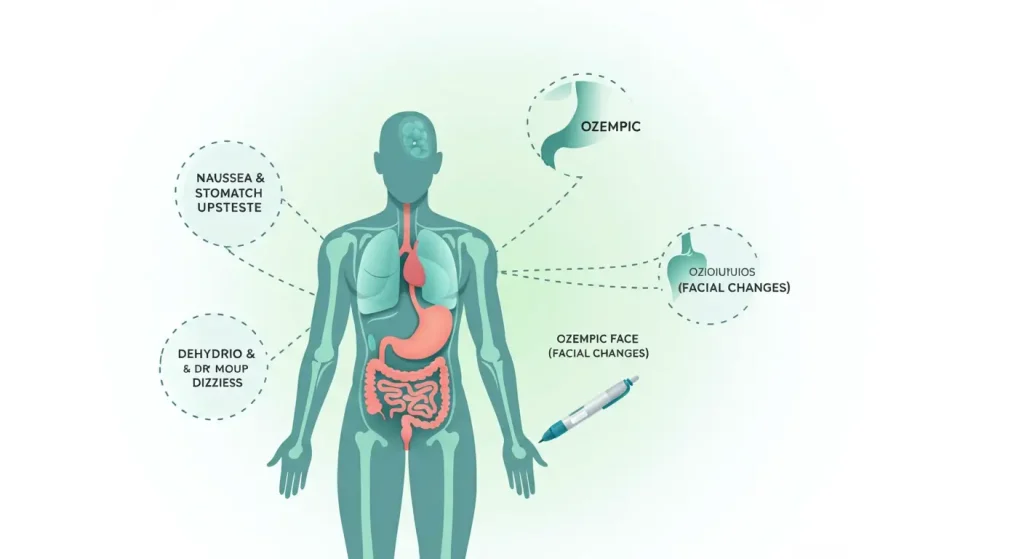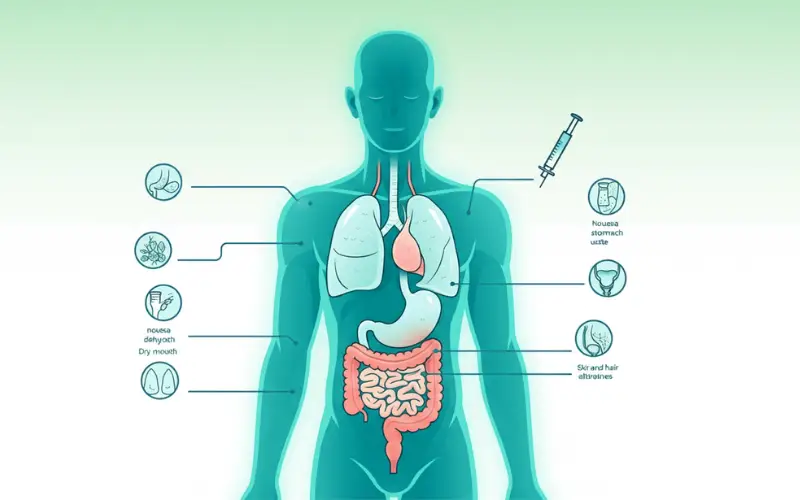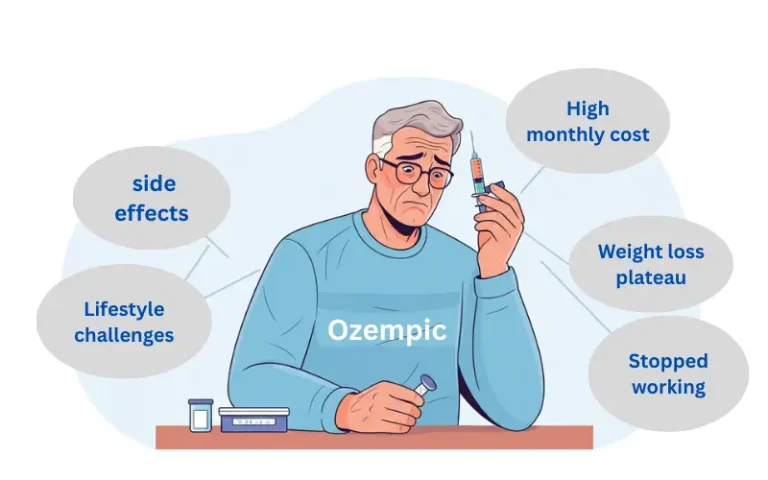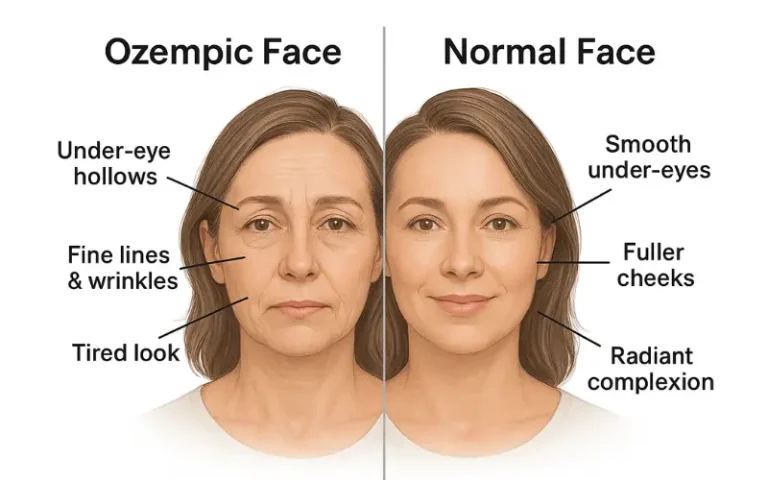What Are the Biggest Side Effects of Ozempic?
Biggest Ozempic Side Effects: What You Need to Know

Ozempic, a brand name of the medication Semaglutide, has gained significant attention. Originally approved to help people type 2 diabetes manage their blood sugar level, it’s also recognized for its weight loss effects. As a GLP-1 receptor agonist, it works by mimicking a natural hormone that helps to control blood sugar, slows digestion, and reduces appetite.
While its benefits are clear for many, it’s just as important to understand the potential downsides. Every medication comes with a range of possible reactions, and being informed helps you and your healthcare provider make the best decisions for your health. This article explores the biggest side effects of Ozempic, from common digestive issues to rarer, more serious risks.
The Most Common Culprits: Gastrointestinal Side Effects
The most frequently reported Ozempic side effects involve the digestive system. This isn’t surprising, as the medication directly affects how quickly your stomach empties. While these issues are often mild and temporary, they can be uncomfortable.
- Nausea: This is the top complaint among users, especially when first starting the drug and increasing the dose. It can range from a peaceful inconvenience to more persistent queasiness.
- Diarrhoea: About 1 in 12 people in clinical trials experienced diarrhoea. It typically subsides within a few weeks as your body adjusts.
- Constipation: On the other end of the spectrum, the slowing of digestion can also lead to becoming backed up.
- Stomach Pain and Bloating: Abdominal cramps, gas, and a feeling of fullness are also common.
- Vomiting: While less common than nausea, some people do experience vomiting, particularly at higher doses of semaglutide.
What Are “Ozempic Burps”?
A peculiar and sometimes embarrassing side effect is the “sulfur burp,” often called an “Ozempic burp.” Because digestion is slowed, food sits in the stomach longer, allowing sulfur-containing gases to build up. When you burp, it can have a distinct rotten egg smell. While harmless, it can be socially awkward. Reducing sulfur rich foods like broccoli, onions, and red meat may help.
Understanding Rare But Serious Risks
Beyond the common digestive troubles, several serious but rare Ozempic side effects require immediate medical attention.
- Pancreatitis: It is a painful inflammation of the pancreas. While uncommon, it’s a known risk with GLP-1 receptor agonists. Symptoms include severe abdominal pain that doesn’t go away and may radiate to your back.
- Gallbladder Issues: Some users have developed gallstones or gallbladder inflammation (cholecystitis). Seek medical help for pain in your upper stomach, fever, or yellowing of the skin and eyes.
- Kidney Problems: Dehydration from severe vomiting or diarrhoea can lead to acute kidney injury. It’s crucial to stay hydrated.
- Bowel Obstruction (Ileus): In rare cases, the slowing of the intestines can become so severe that it causes a complete blockage. This is a medical emergency.
- Thyroid Tumours: In animal studies, semaglutide was linked to thyroid C-cell tumours. While the risk in humans is unknown, people with a personal and family history of the (MEN 2) should not use Ozempic.
Cosmetic Effects: The “Ozempic Face” Phenomenon
One of the most talked about side effects isn’t medical, but cosmetic. “Ozempic face” refers to facial changes resulting from rapid weight loss. When you lose fat quickly from all over your body, including your face, the skin can lose volume and elasticity.
This can result in:
- A hollowed or sunken look, especially in the cheeks and under the eyes.
- More pronounced wrinkles and fine lines.
- Sagging skin, giving a more aged appearance.
It’s important to note that this effect isn’t unique to Ozempic, it can happened with any form of rapid, significant weight loss.
Changes in Vision and Mood
Some users report changes in their vision, such as blurriness. This can be related to shifts in blood sugar level affecting the lens of the eye. While often temporary, any new vision problems should be discussed with your doctor.
Early concerns were raised about a potential link between GLP-1 receptor agonists and suicidal thoughts. However, a large FDA review found no clear connection. Nonetheless, suppose you experience any significant mood changes, including feelings of depression, anxiety, or restlessness. In that case, it is vital to contact your healthcare provider immediately.
Managing Ozempic Side Effects: Practical Tips
Living with the side effects can be challenging, but there are ways to cope. Managing Ozempic side effects often involves simple lifestyle and dietary adjustments.
- Eat Small, Frequent Meals: ratherof three large meals and try eating smaller size portions throughout the day to decrease nausea and bloating.
- Choose Bland Foods: When nausea strikes, stick to simple foods like crackers, toast, and rice. Avoid greasy, spicy, or very sweet foods.
- Stay Hydrated: Sip water throughout the day. This is especially important if you are experiencing diarrhoea or vomiting, as it helps prevent dehydration and potential kidney issues.
- Increase Fibre for Constipation: If you’re constipated, gradually add more fibre to your diet with fruits, vegetables, and whole grains, and ensure you’re drinking enough fluids.
- Go Slow: Your doctor will likely start you on a low dose of semaglutide and increase it gradually. This titration schedule helps your body adjust and can minimise the intensity of side effects.
What About Allergic Reactions?
Though rare, a severe allergic reaction (anaphylaxis) is possible with any medication. Seek emergency medical help if you experience symptoms like:
- Swelling of your faces, lips throat or tongue
- Difficulty breathing or swallowing
- A severe rash or itching
- Fainting or feeling dizzy
- A very rapid heartbeat
When to Call Your Doctor
Most common Ozempic side effects are manageable and improve over time. However, you should not hesitate to contact your healthcare provider if:
- Side effects are severe or prevent you from performing daily activities.
- You experience intense abdominal pain, severe vomiting, or prolonged diarrhoea.
- You notice a lump in your neck, have trouble swallowing, or experience hoarseness.
- You have symptoms of a serious allergic reactions.
Your Health Comes First
Ozempic can be a highly effective tool for managing with the type 2 diabetes and supporting weight loss. However, understanding the full spectrum of its side effects is crucial for using it safely. From common digestive issues to the phenomenon of “Ozempic face,” being aware allows you to prepare and manage any challenges that arise.
The most important step is maintaining an open dialogue with your healthcare provider. They can help you navigate side effects, adjust your dosage, and determine if Ozempic is the right choice for your health journey.







